Translated directly from the original Spanish version
During our last days in Tangier, we stocked up on food and prepared for our next crossing, the longest so far (600 nautical miles) and the start of our Atlantic adventure: Tangier – Lanzarote.
Excited to sail the Atlantic for the first time, we knew the first three days would have little wind, not a problem for our Marlin, known for excellent sailing performance, especially in light wind. However, we were curious about how our boat would handle Atlantic swells, which are generally higher and longer than those in the Mediterranean.

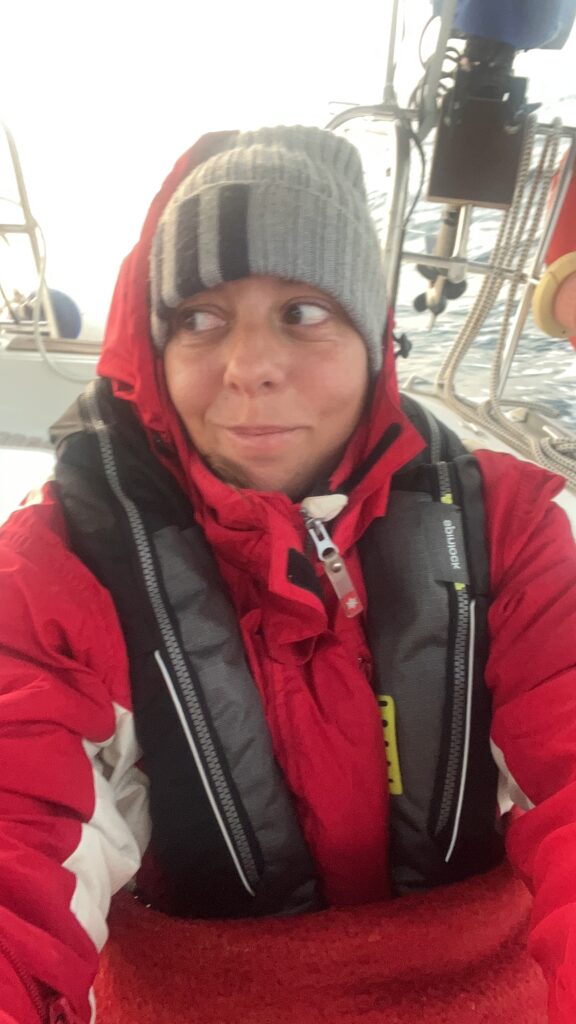
Despite forecasts of light wind, we left Tangier with over 20-knot westerlies, typical of the Strait of Gibraltar. Once past the strong winds, we turned south, enjoying calmer conditions with little wind and almost no waves. We spotted jumping fish and decided to fish for dinner. Soon, we caught a large tuna—our first of that size!
Although we didn’t really feel ready to bring it out of the water, we had no choice if we wanted to enjoy a good meal in the coming days. Joseph put on gloves to bring the tuna into the cockpit. Just as he pulled it onboard, he was stung in the left foot by a wasp. It was a chaotic moment: Joseph was looking for a tool to remove the venom from his foot, while I struggled with the fish.
Once things calmed down, we began cleaning and filleting the tuna. We were surprised by how much meat there was on this fish! Luckily, we have a freezer to store the fish for the next few days and weeks. After this experience, one thing was certain: next time, we would be better prepared for fishing and would thoroughly research all the steps beforehand, especially how to kill the fish as quickly as possible.
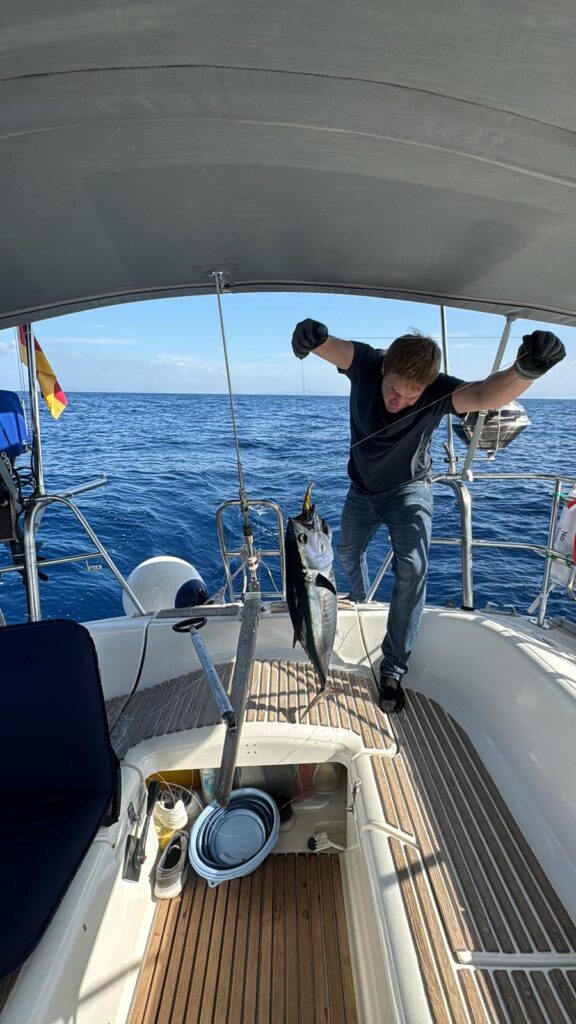

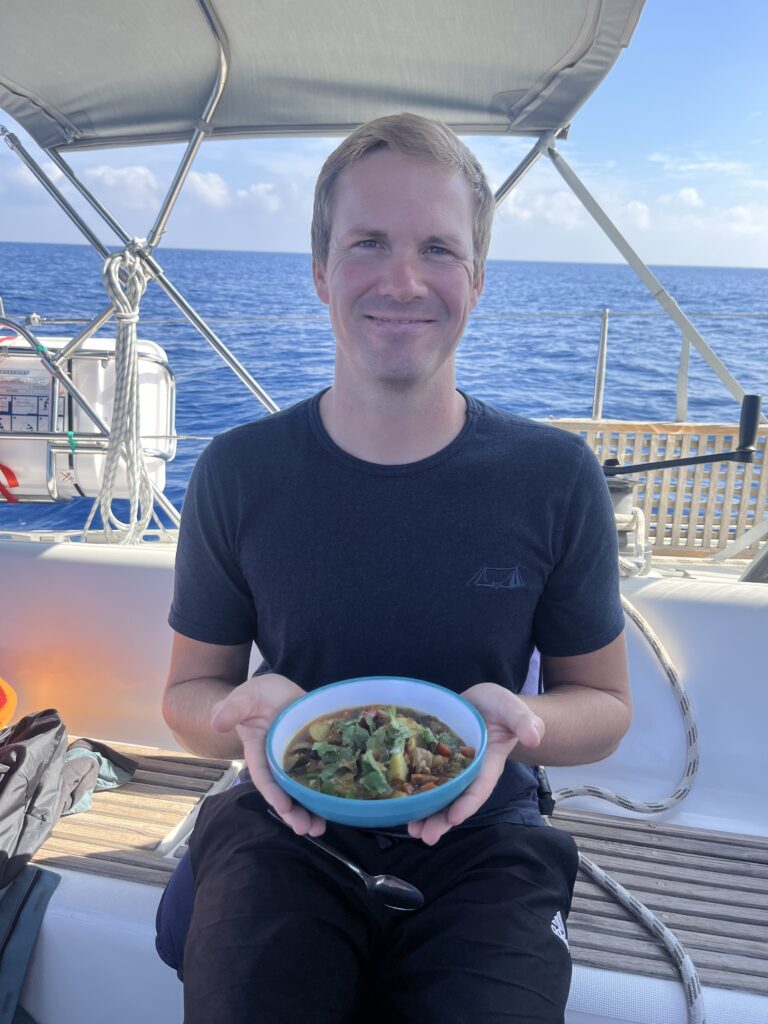
Throughout the entire crossing, we enjoyed delicious meals. We had never eaten such fresh and flavorful tuna!
The following days were very calm, with little wind and long, high swells, typical of the Atlantic. For an entire day, we were surrounded by dense fog, which made visibility very difficult, especially at night. It was our first experience sailing with virtually no visibility, with less than 50 meters of sight. Additionally, this fog brought a fine layer of red sand, which ended up covering our boat from top to bottom.
On day four, winds increased to 22 knots with stronger, shorter waves. It was the perfect test for our new autopilot, but it failed due to loose screws and a weak part, giving us another project for our next stop.
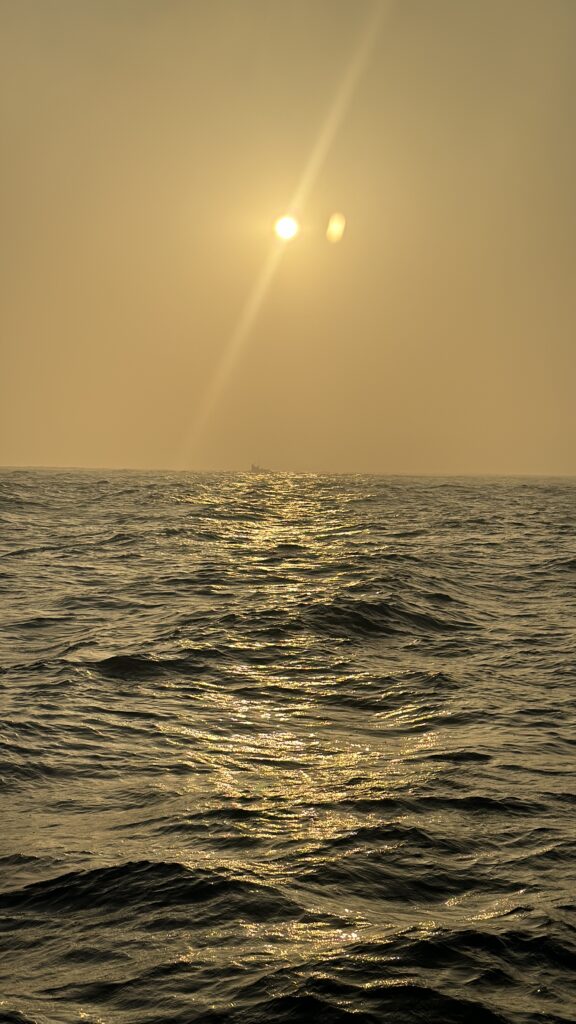

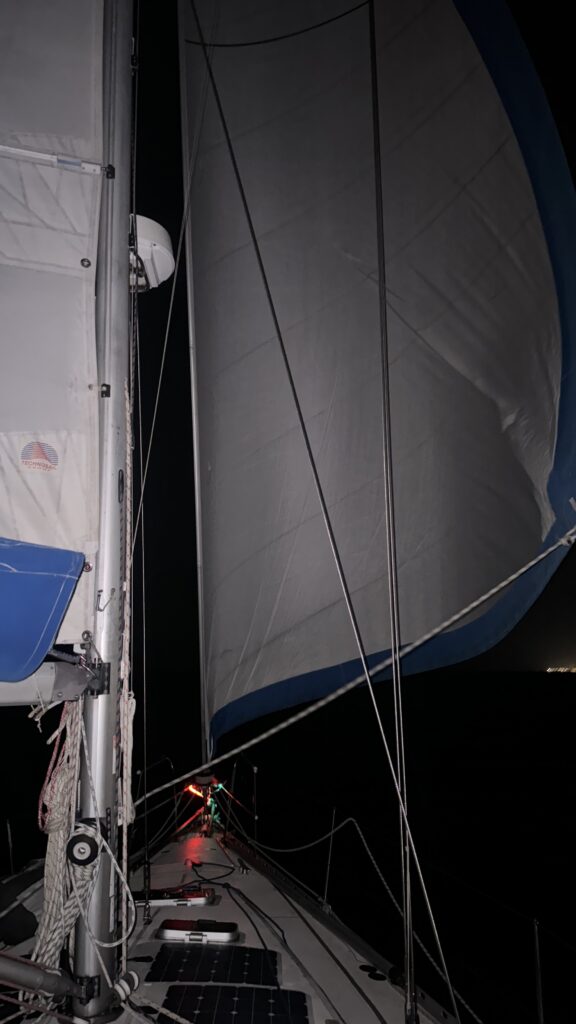
After five and a half days, we reached Marina Rubicon in Lanzarote, reuniting with friends from Vaquita and Sailing Seven. We spent a week exploring the island, completing boat projects, and enjoying time with friends and family, finishing our remaining tuna portions in a farewell dinner.

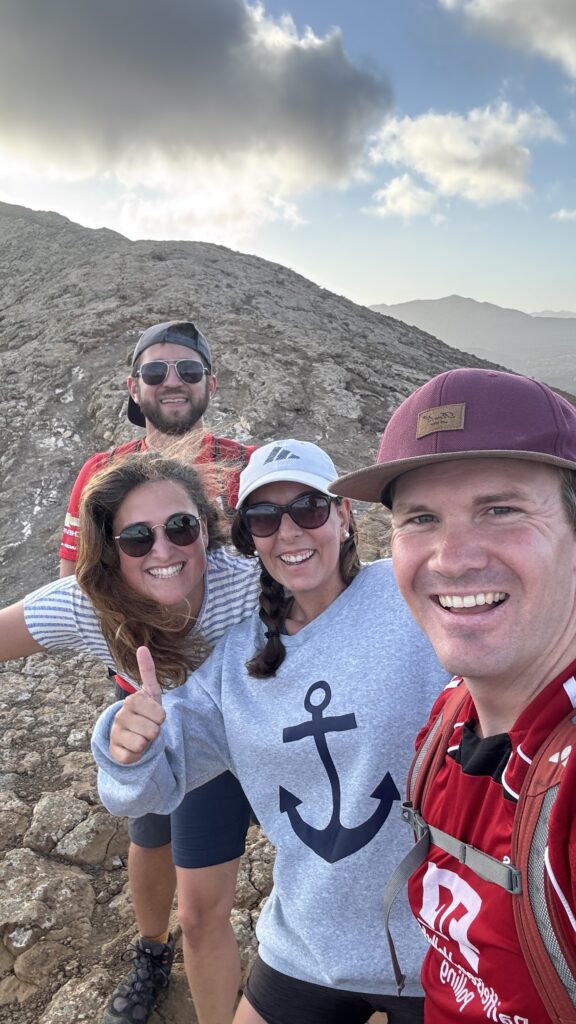


Our next and final stop in the Canary Islands was Santa Cruz de Tenerife. This island was also the last place we visited before sailing to Cape Verde.
During two weeks at the Puertochico Port, we focused on stocking up on food for the coming weeks and even months. We bought plenty of food and water, as prices in Cape Verde and the Caribbean islands are much higher. This required some organizational skills—not only in terms of the products but also in terms of quantities and where to buy them. In total, we spent about four full days shopping in different supermarkets and municipal markets in Santa Cruz.
Luckily, Carmen, our friend who lives in Santa Cruz, advised us on the best places to buy each item on our shopping list. With her, we also got to experience authentic Canarian cuisine in the local Guachinches, which have a varied and special flavor. Tasting the typical dishes of each place has always been our greatest passion!
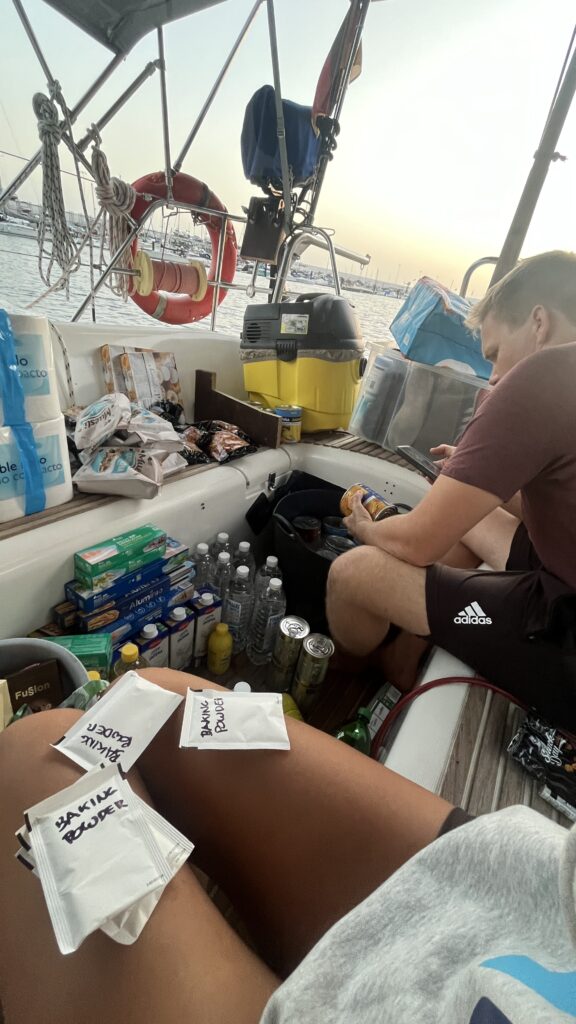

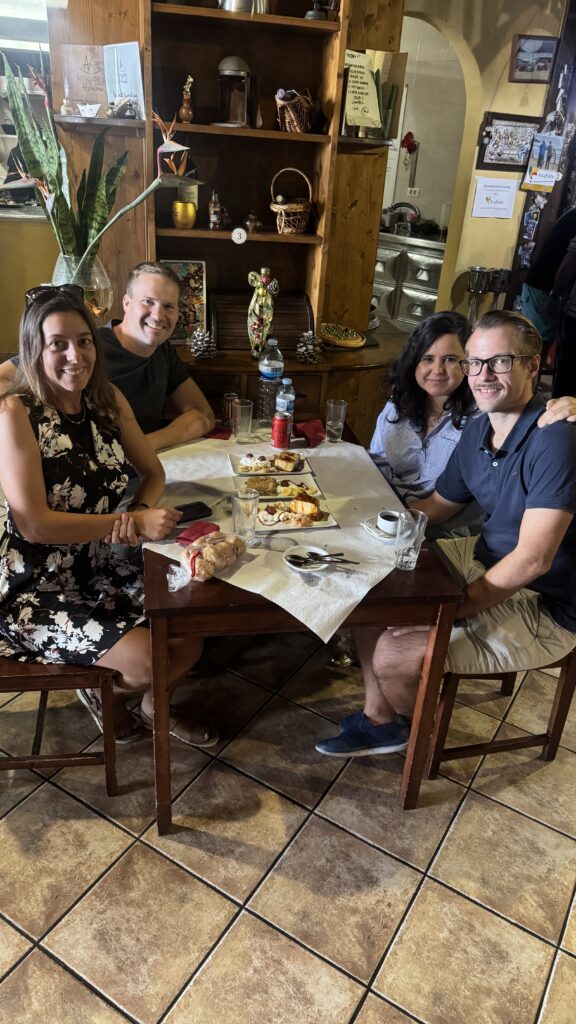
We still hadn’t fixed the autopilot project. We tried to find a company that could make a stronger part, but the price was higher than we had expected. So, Joseph spent a full day laminating and reinforcing the part we already had. This way, we saved €600, almost half of our monthly budget.
Besides completing some tasks, we also rented a car during these days to explore the island. Of course, we couldn’t miss a visit to Teide National Park, where we went on a hiking trip, as well as discovering other places of stunning natural beauty, such as the Anaga Natural Park and the charming village of Chamorga.

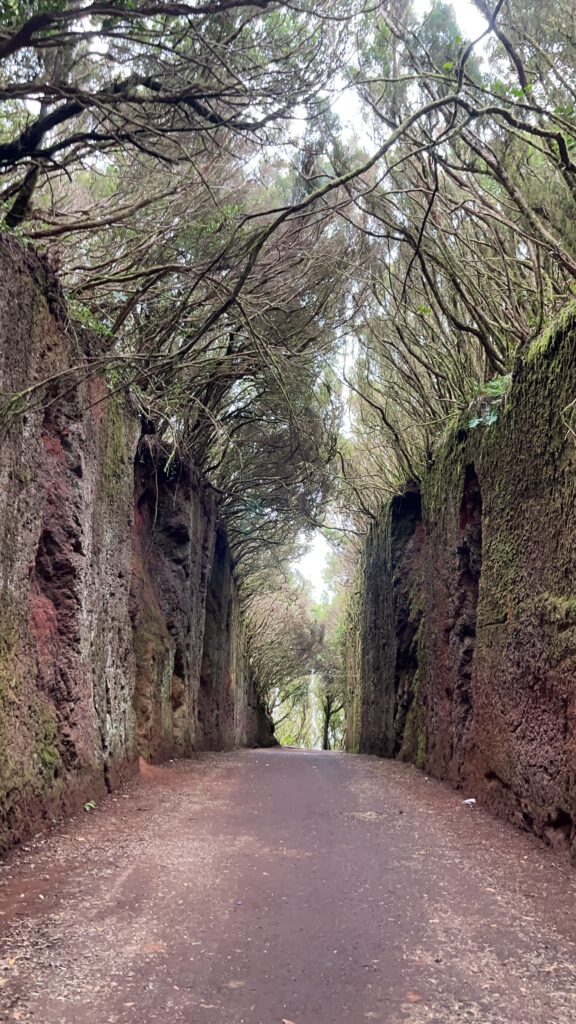

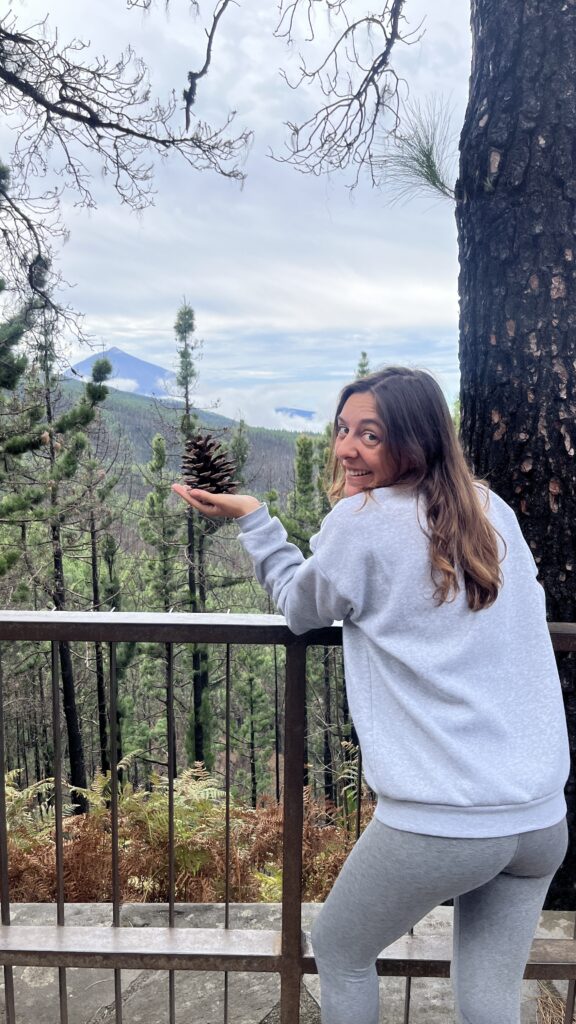

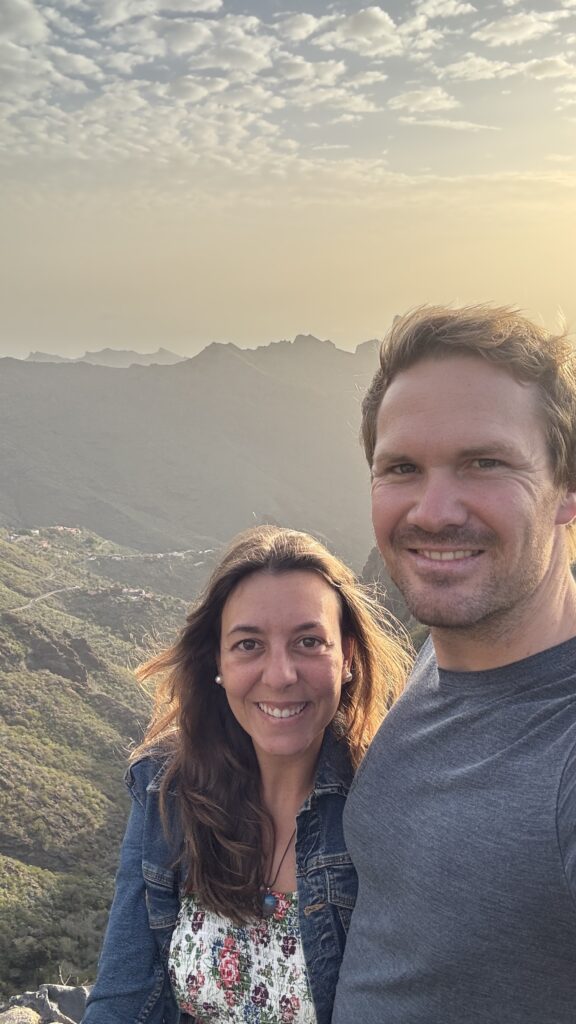
One of the most special moments of our stay was receiving a visit from some of our Instagram followers. Thanks to social media, we had the opportunity to meet new people during our journey, sharing unforgettable afternoons on the boat and on the island, talking about our experiences, and discovering different ways of life.
Time in Santa Cruz flew by, and in the blink of an eye, our departure date was approaching quickly. We had mixed feelings, excitement for the adventure ahead, combined with the realization that there was no turning back. The uncertainty of what we would find after another 800 nautical miles was bittersweet; a blend of the unknown, but also new experiences that would make us stronger along the way.

